
This article is all about how to have success fishing for winter blackmouth in Puget Sound. I reveal the best locations, the best fishing techniques, and lures for catching winter blackmouth in Puget Sound.
I will also attempt to provide insight into the recent issues with blackmouth fishing in Puget Sound. Answering questions such as: Why have we lost the blackmouth fishing seasons we used to enjoy? Will we get these seasons back?
I served on the Puget Sound Recreational Fishing Enhancement Fund Oversight Committed (PSRFEF OC). And yes, that’s a real acronym! The PSRFEF historically was about expanding Puget Sound recreational fishing opportunities outside of the main summer months, which basically translates to blackmouth and bottom fish.
I share that to say, I’ve gained some insight worth sharing about where blackmouth fishing in Puget Sound is headed and why.
Why are these salmon called blackmouth?
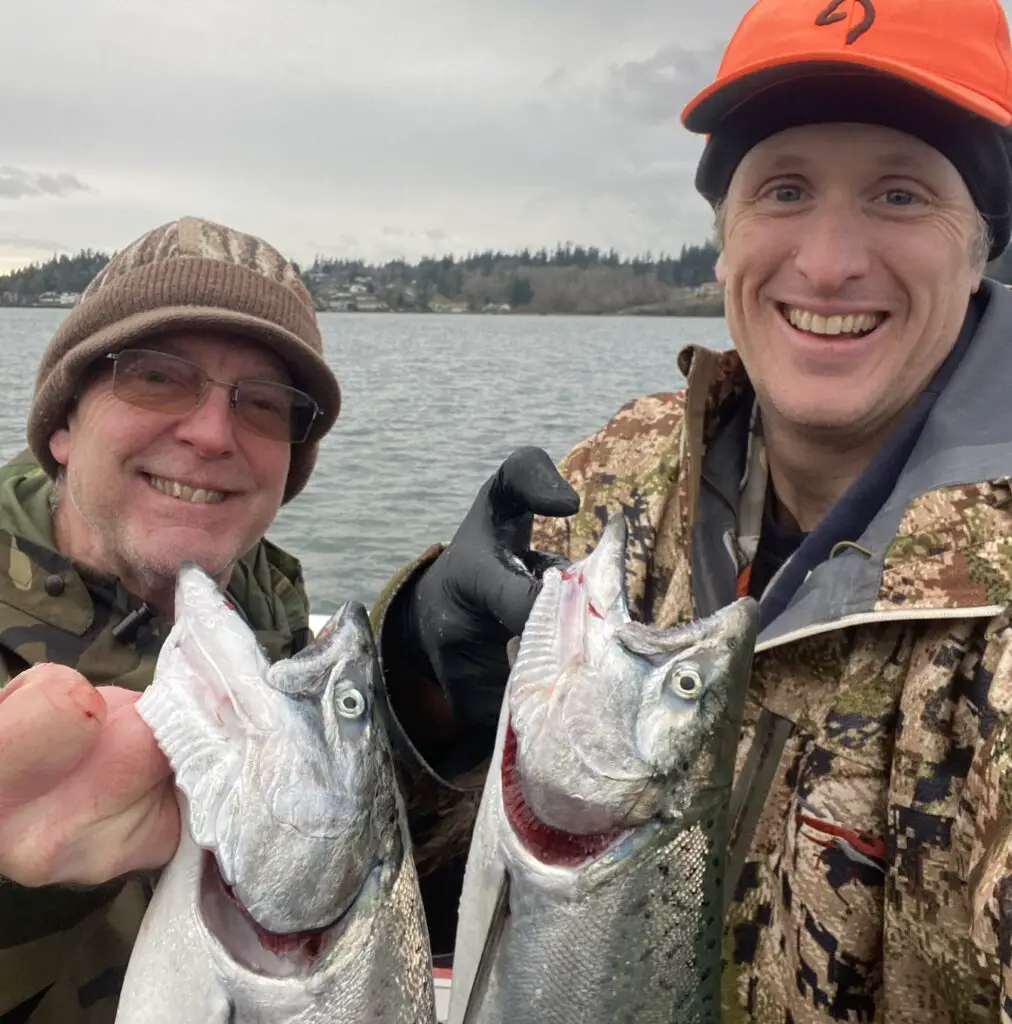
OK, so first, why are these fish called blackmouth? Why not just call them king or chinook salmon? The term “blackmouth” refers to the dark gum line that is a distinguishing feature for identifying all king/chinook salmon.
The term “blackmouth”, though specifically is used to distinguish king salmon which are NOT approaching sexual maturity or migrating to spawning rivers. These immature chinook are voracious feeders as they are very much still in the “bulking up” and growing phase of their lifespan.
But wait! I thought king salmon migrated out to the ocean? What are these fish doing in the Puget Sound?
Yes, most Puget Sound kings will migrate out to the ocean and travel as far as the coast of Northern BC or even Alaska. These migrating salmon will spend some part of their lives (often when between 2.5 – 3 years old) in the Puget Sound.
But, there is no switch that tells these fish they must leave the river and go straight out and up north. Some fish may stay around Puget Sound for their entire lives. Some salmon may go to the Strait, then mill around the San Juan Islands, then come back down south to Puget Sound and do it all over again.
Some may hang out around western Vancouver Island and then mill around Puget Sound for another year before reaching sexual maturity.
You get the idea, there are no set rules here.
One rule is true all the time though with these fish. They are hungry. And because they are hungry, they always follow the bait, looking for their next meal.
The availability of that meal is what drives their behavior more than anything else. Why are there blackmouth in the South Sound one week and the next not? This is all about the availability of bait.
Find the bait, find the fish.
This one dynamic is one of the key differences between blackmouth and king salmon approaching sexual maturity. Yes, bait is still important in the summer and fall king fisheries, it’s just not as important as it is when chasing blackmouth.
Recent News / Posts about Blackmouth
- Fishing Update for February 2025, Blackmouth, Steelhead, and Fish Politics
- My January, 2025 salmon fishing trip to Canadian waters
- Opportunities all 2025 in the PNW to hunt, fish and forage
- Puget Sound Salmon Seasons 2024
- Puget Sound Salmon Forecasts 2024
When does the 2025 blackmouth season open up?
You can read all about the 2024-2025 puget sound salmon seasons here, but the short answer is April 2nd, 2025.
As always, you can fish south of the Narrows Bridge in MA13 for chinook all year long, unless there’s an emergency closure.
Recent Creel Report Data from Marine Areas expected to open for Blackmouth fishing on Mar 1st, 2024
Before April 2nd, the only chart below with “interesting” data will be the Marine Area 13 chart since it remains open unless there’s an emergency closure.
Recent Creel Report Data from MA10 Chinook fishing
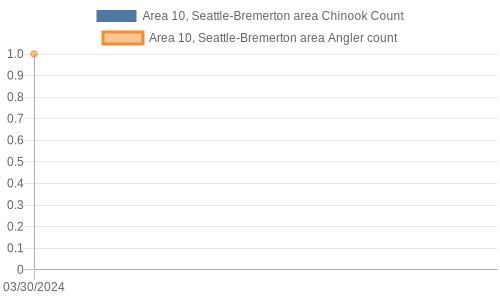
Recent Creel Report Data from MA11 Chinook fishing
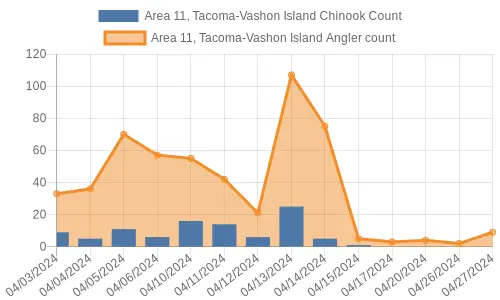
Recent Creel Report Data from MA5 Chinook fishing
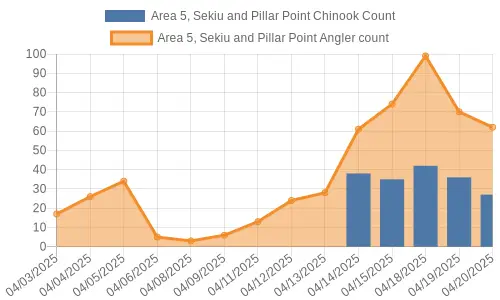
Recent Creel Report Data from MA13 Chinook fishing
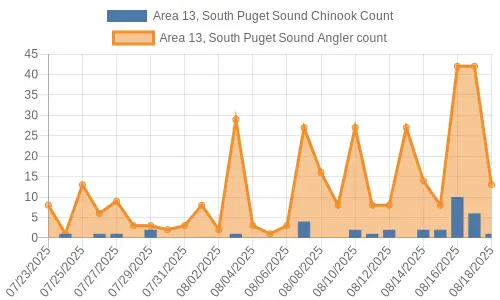
Best locations to catch Blackmouth in Puget Sound
The best location to catch blackmouth has to start with whichever Marine Area is open. Ha! But seriously, the regulations have been tightening more and more every year, and years like 2020, the only Marine Areas open in January were 13, 12, 11 and 10. And really only Marine Area 10 was putting out fish.
Marine Area 13
Usually open year around, but rarely a reliable place to target blackmouth. Try Point Fosdick down to Fox Island in May-June.
Marine Area 11
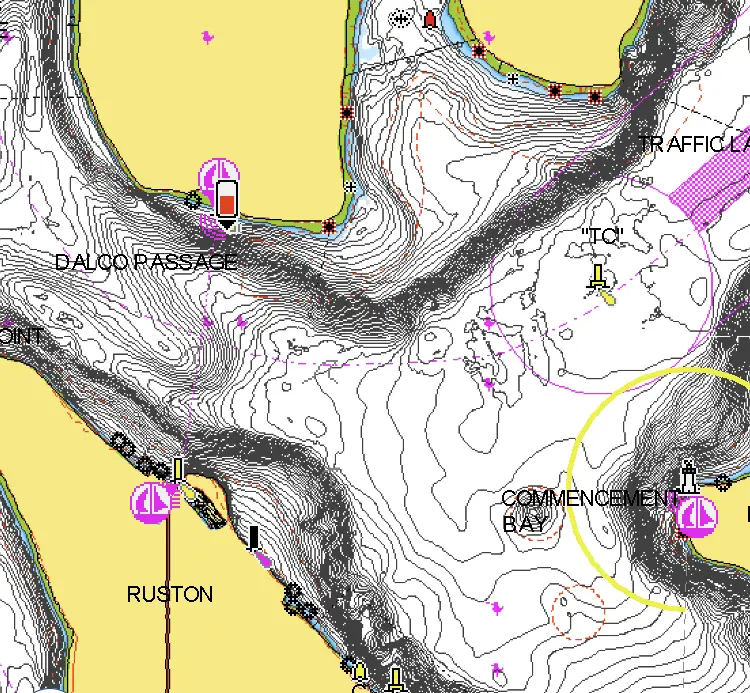
Generally open more than most areas, but blackmouth abundance can be very inconsistent. Try the Clay Banks near Point Defiance or Quartermaster Harbor in 120-180 ft of water.
Marine Area 10
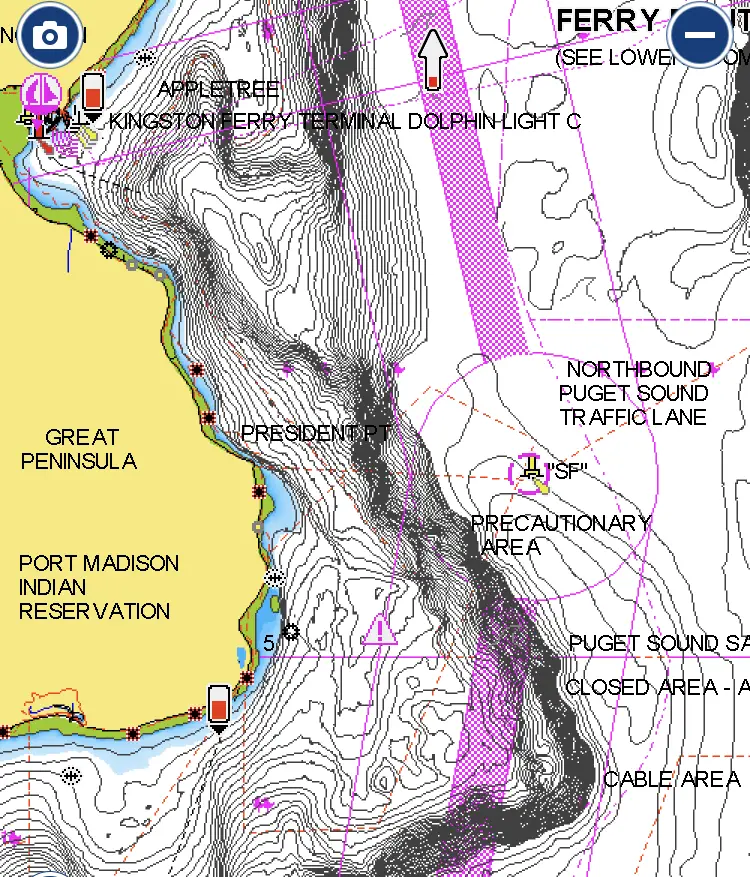
A regular producer of good blackmouth fishing. Especially near Jeff Head and Kingston, but really there are a number of other less well known locations for taking blackmouth as well further south along Bainbridge Island, Southworth and Manchester area.
Marine Area 9
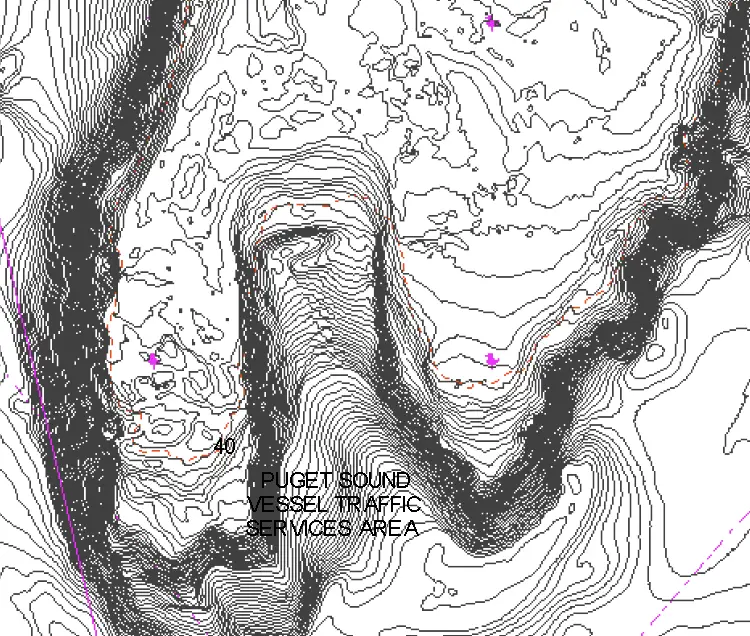
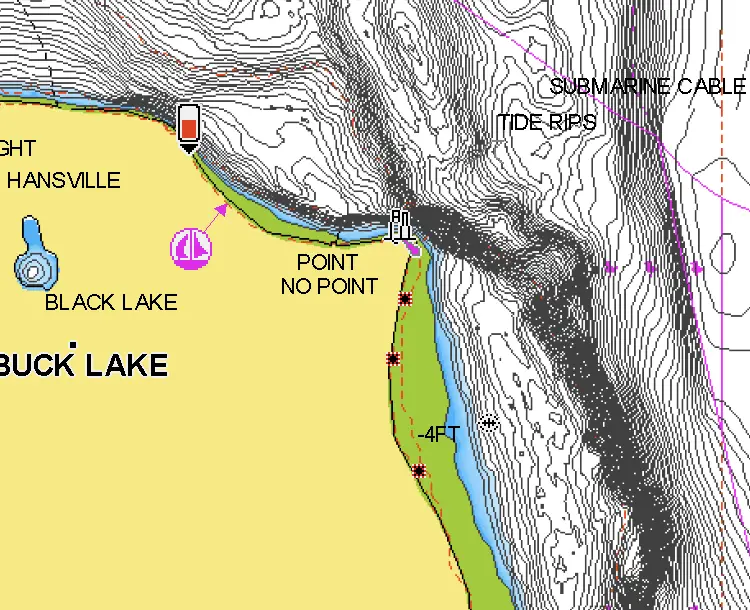
Point no Point and Possession Bar are two of the most consistent salmon fishing spots in the entire Puget Sound and winter blackmouth is no exception.
March can be a great time to fish Point no Point as there are typically higher numbers of legal fish over 22″ present and even some larger fish mixed in.
Marine Area 8-1 & 8-2
Close to the Port of Everett, great blackmouth fishing can be great off of Columbia Beach as well as Racetrack (between Camano head and Hat Island).
Marine Area 7
The San Juan Islands are in a class all their own when it comes to blackmouth fishing. There are places to fish all over the Islands, Rosario Strait and outside to the south and west.
Marine Area 6
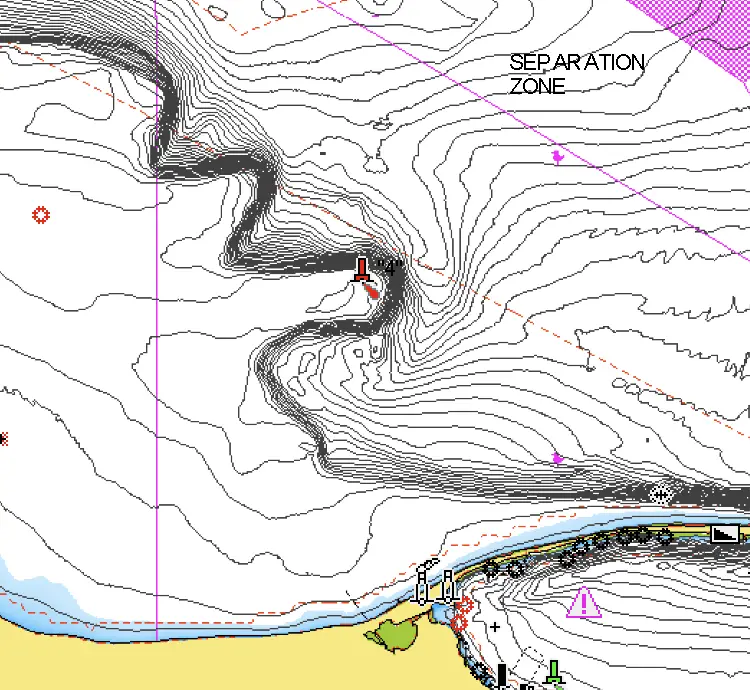
One of the exciting aspects of fishing Marine Area 6 is the possibility of intercepting the rare puget sound springer. These fish will almost always be in the teens or larger. Typically, Marine Area 6 won’t open up until later in the season.
Marine Area 5
Although not technically part of Puget Sound, the MA5 waters are typically covered by WDFW’s Puget Sound regulations bundle. Here’s our comprehensive page covering salmon fishing around Sekiu.
Best fishing techniques and lures for Blackmouth
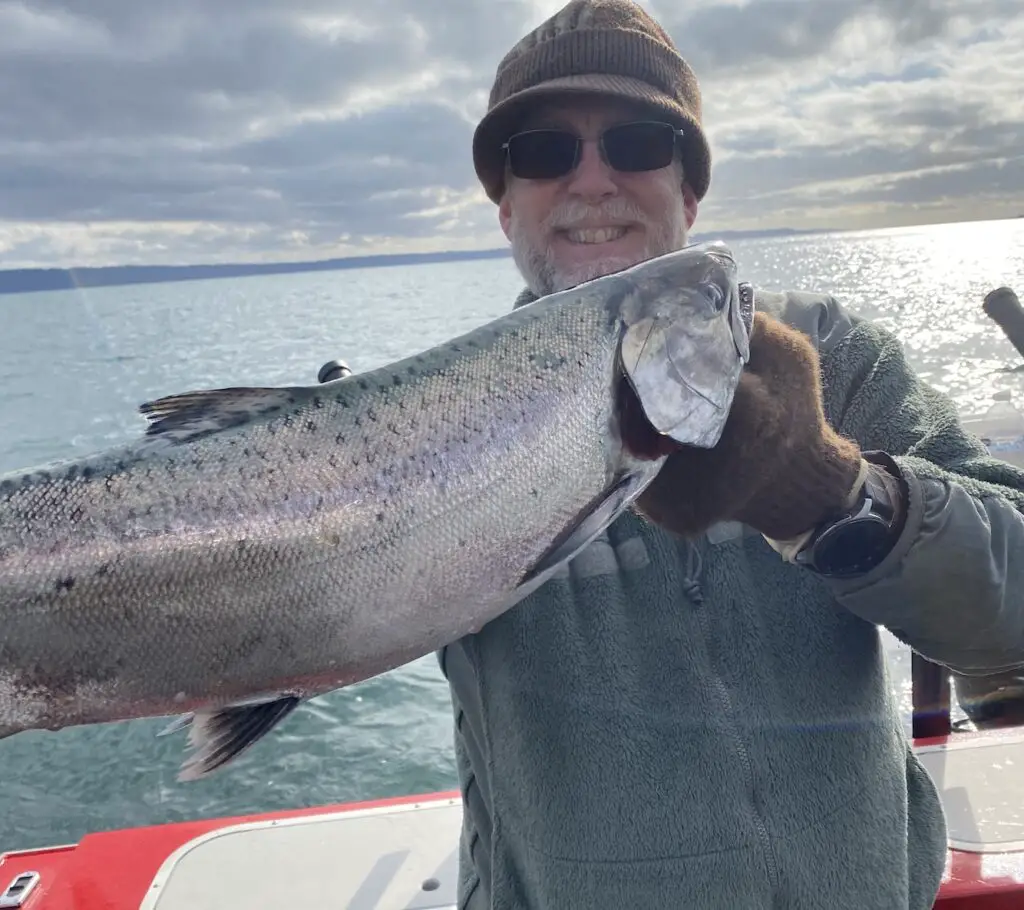
Another key difference between targeting Puget Sound salmon which are migrating to their natal streams and blackmouth is the depths to target them. Most often, blackmouth are found with their nose in dirt on the very bottom of the sea floor.
They typically won’t be suspended mid-water column unless there’s bait that’s suspended. You can read our primer on Puget Sound Salmon Fishing to learn more about this topic.
This bottom-of-the-water column approach usually translates to fishing with downriggers, which you can read all about on our page dedicated to downrigger trolling for salmon.
What are these fish doing on the sea floor? During the winter months, there’s often a hatch of candlefish or sand lance that these feeder chinook will key in on as well as a wide variety of other options.
Blackmouth aren’t exactly picky and will take any number of species of forage fish available in Puget Sound. The bottom line is that this activity is almost always going on, at the bottom. So your gear needs to be down there to experience success.

I will typically drop my downrigger ball until it hits bottom, and then come up a few feet while trolling my offering. Note: This may not be a great strategy in really rocky areas like you might find in some parts of the San Juan Islands.
Remember what I said earlier about there being no rules with blackmouth? While that’s true, most Puget Sound blackmouth are in the 2-3-year-old range which means their size is more often predictable.
Current regulations (as of this writing in 2024) for the Puget Sound state that a fish must be 22″ to be considered a legal keeper, and there will often be many fish around that size and smaller than that, hungry for your offering.
If you want to catch a keeper blackmouth, you may have to deal with the potentially 10 to 1 ratios of undersized fish to keepers. There are basically 2 methods to keep the smaller stuff off your lines:
- Use larger offerings
- Go faster
If the recreational fleet fishes more consistently with larger offerings like plugs, large spoons, hoochies, etc that will be reflected by the test fishing boats as well.
If the test fishing boats use larger offerings, they will encounter fewer sub-legals, and as of 2024, that encounter ratio and quota are the primary reasons our blackmouth seasons are curtailed.
Use larger offerings for keeper blackmouth in the Puget Sound
You can catch a lot of blackmouth on that coho killer or that size 2 kingfisher spoon, but how many of these fish will be legal keepers? It’s important to note that all of the fish we “encounter” and release count towards how WDFW determines impacts and quotas.
This means if the sport fleet is catching sub-legal chinook at a 10 to 1 pace to keepers, then a quota of 1000 fish will get consumed by only 100 legal salmon retained. That’s not what anybody wants!
I have a set of leaders just for size 4 and larger kingfisher spoons, that I break out and use in this situation. You can also fish with salmon plugs like the 4″ Tomic.
Hoochies are also an option but keep in mind that you will also need to go fast enough to get that flasher and hoochie spinning to generate the right type of action.
Another approach is by using the ProTroll flashers with the agitator fin, to enable you to spin that hoochie really well at slower speeds. I’m specifically calling out the speed factor here, because when you are fishing on the bottom in 120-150 ft of water, it may be challenging for you to remain in contact with the bottom plus keep your speed up.
Using 15-18 lb downrigger balls to counter the blowback can be important to help with the combination of higher speed and fishing deeper. Also, a lot of anglers make the switch to braid for less blowback.
Go faster to keep sub-legal blackmouth off of your line
Smaller fish cannot travel through the water column as fast as the bigger fish. I was hooking into quite a few sub-legals recently on my Marine Area 10 blackmouth fishing trip near Kingston in January 2020, until I sped up to about 2.4 knots (2.8 mph).
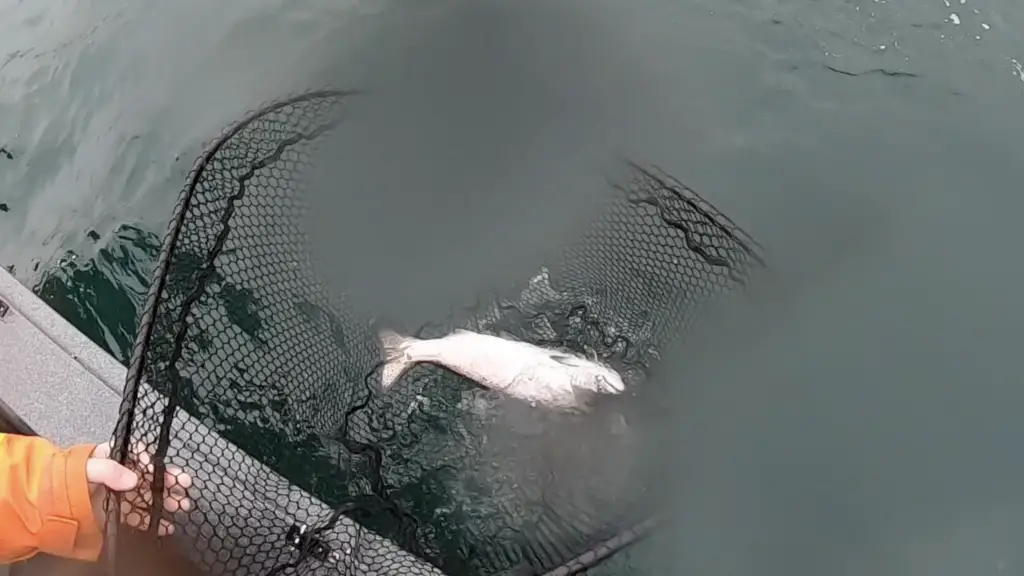
I caught fewer fish, but when that bite happened, it was far more exciting as I knew it was likely a much nicer fish.
If you are on a smaller boat, you may be running a rod and tiller handle at the back of the boat to steer at the same time you are working a downriggger.
This multi-tasking setup may require a bit more effort to get down to depth while maintaining speed, especially if you have any wind that will knock you off your course while you are messing with the downrigger. Here’s what I do:
- If the bottom is 100 ft, I will drop my downrigger ball down to about 80 ft.
- Than I will get up to 2.4 -> 2.8 knots speed
- I will than drop the rest of the way to 100 ft, and then finally come up a few feet.
The bite can be so fast that if you were to drop all the way down first, than get up to speed, you may already have a sub-legal fish on!
Best flashers for puget sound blackmouth

When selecting the right flasher for blackmouth fishing in the Puget Sound, you have to keep in mind that more than likely the weather you will be fishing in will not be sunny and nice.
Most likely, there will be clouds, rain, snow, and whatever a January-February in Puget Sound decides to throw your way. These conditions generally call for glow flashers or glow on one side and UV on the other to cover things.
You can leave the UV / Haze-type flashers at home on most days.
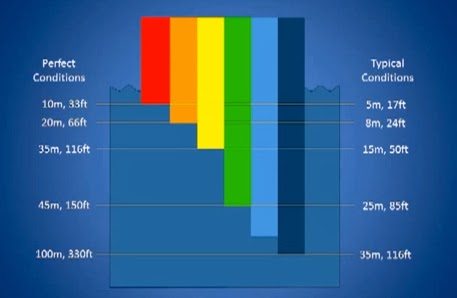
You should also consider the visible color spectrum underwater, given you will be fishing down deep near the bottom of Puget Sound.
You can leave the orange/red stuff for summer fishing. Here are a few of my favorite all-purpose flashers.

Coyote Blue Crush 11″ Flasher
The above Coyote blue flasher is one of my absolute favorites. I use it during all seasons and catch fish consistently everywhere it gets used. Blackmouth season is no exception.
The Madi UV purple flasher by Gibbs is probably my new favorite producer for blackmouth. I’ve usually got this on one rod and the blue coyote flasher on the other. The last few times I’ve been out though, in 2022 (which was a great season for us), the Madi out-performed everything.
Another flasher to consider is the blinky flasher recently released by Pro-Troll. There are some good anglers that really swear by these and certainly, the logic pans out for Puget Sound blackmouth fishing when you want to be down deep where there is less light, having a flashy flasher might help.
This 11″ lighted flasher by Pro Troll is a good choice in terms of color scheme!
Another aspect to fishing 11″ flashers that I’ve discovered in the last few years is a very smooth functioning flasher release system. The below video explains a bunch of it, but I will also summarize things:
Seriously, consider picking up these Coldwater Strong Flasher Releases. From the video footage I summarized above, I was surprised how many times I thought I was fighting a bigger fish than I actually had on because I’m so used to fighting a fish through the 11″ flasher.
The flasher release system lets you feel the fish again.
So, not only does this piece of tackle add fun to the saltwater salmon trolling experience, but it also eliminates the lost fish from the flasher being turned the wrong way during the fight.
Anyone who has fought enough salmon while using an 11″ flasher knows what I’m talking about.
You had a good hook set, the rod might be under max pressure, with the salmon running away from you, and all of a sudden the hook pops out.
These scenarios have basically been eliminated…now there are still many ways to lose salmon with barbless hooks, but now that I’ve switched to this flasher release system, I can’t go back!
Best trolling spoons for blackmouth in the Puget Sound
In terms of trolling spoons, I really like the coho killer in the Herring Aide pattern. It’s a smaller offering, but it has put many keeper blackmouth on the deck as its slender body imitates the candlefish/sand lance these salmon are typically feeding on.
You should not use this when the out-migrating sub-legals are around as you will catch too many of them to find a legal keeper.
Trolling bait for blackmouth in the Puget Sound
I have to share my absolute favorite recent approach to catching keeper blackmouth and that’s trolling whole anchovies in the Rhys Davis Anchovy in Herring Aide glow pattern.
We were able to eliminate most undersized fish with this and were also quite successful in limiting with 8-10 lb blackmouth every day in 2022.
This setup also works great for summer returning salmon as well!
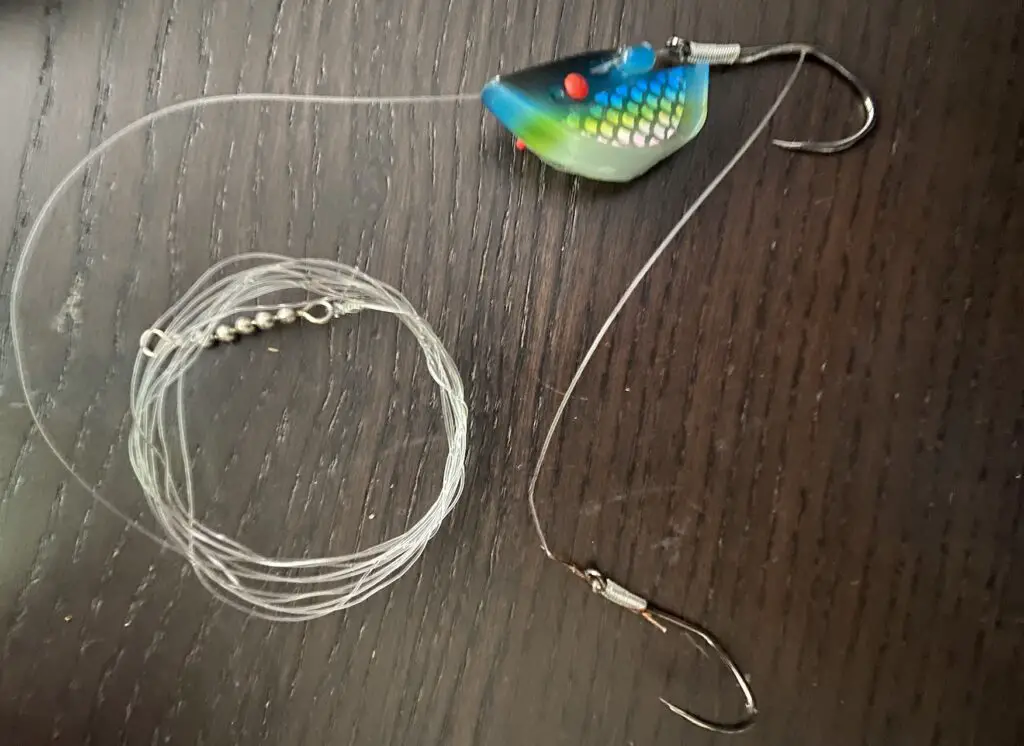
I use a 25 lb fluorocarbon fishing line to tie this rig up. About 48″ from swivel to the first 3/0 hook in the double hook rig. Always use a bead chain swivel to counter line twist
Other ways to catch blackmouth in the Puget Sound
The aforementioned 4-5″ Tomic Plug in Purple Haze is another good way to go, especially if you are looking to upsize your offering.
Rod and Reel setups for Puget Sound Blackmouth
Everyone approaches this topic a bit differently, so I can only explain what I do in hopes that it will help you.
Some of what I use is not because it’s the very best blackmouth rod/reel combination, but because it works well enough and offers versatility for other fisheries without requiring entirely different rods and reels.
I basically have two different setups I like to use for Puget Sound blackmouth, which are typically smaller in size, so the general theme is to keep things fun and sporty versus heavy gear that is designed for bigger salmon.
Now some salmon caught during the blackmouth season can be much larger, such as older fish or returning spring salmon and they can push mid-teens. Often times though, the out-migrating population of Chinook will be 22-26″ if they are keepers.
Additionally, the gear ends up being very similar to what you fish for summer chinook. Still downrigger fishing, and you still have an 11″ flasher (though if you use the flasher release system it really cuts down on needing beefier rods).
This Okuma salmon trolling rod strikes a nice balance between not being overmatched as a downrigger rod, but still being fun to play a 5-10 lb salmon on.

Okuma Coldwater Low Profile Line Counter Reel
I’m a big fan of this low-profile line counter reel. It’s got the right feel, line capacity, and drag system for blackmouth and the line counter means I can use it for other applications such as larger river systems where certain methods are more dependent on the line counter feature.
The other approach I like to do with all of my saltwater salmon trolling now is to use a mooching reel.
A mooching reel is not for everyone, but I really like to play fish with this style of reel, and I like how you can always reel to pop a downrigger clip once a fish has struck without worrying about your drag setting.

The above mooching reel could be another approach to downrigger trolling for blackmouth.
There’s another reason why I really like these mooching reels for downrigger fishing, and that’s fishing deeper water and not having to thumb the spool to keep tension on the line when my backing has a lot of braided fishing line.
Either way, I’m usually spooling my reels the same way. I use 150 yards of 50 lb braid as backing and connect it with an FG knot to 100 yards of 30 lb flouro, that way there is no slack introduced in the line as both braid and fluorocarbon line are very stiff. I also like the business end of the line on my reel to not be braided for a variety of reasons beyond the scope of this page.
Other gear you may want for fishing winter chinook
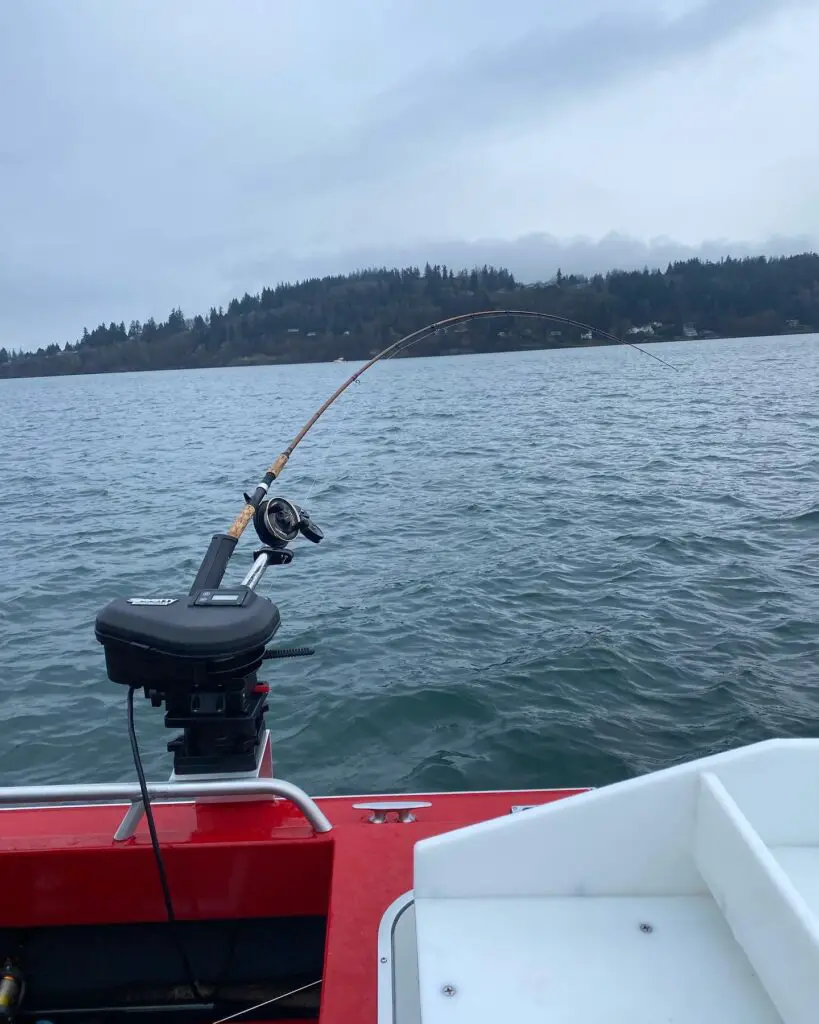
It’s super important for the future health of our runs that we release chinook salmon unharmed that either have an extra fin or don’t meet the minimum size requirements. Just because you didn’t tell the fish checker how many fish were released doesn’t mean that it doesn’t all catch up to us when redds are counted or escapement is factored in.
Studies have shown that a mishandled salmon reduces the chance for it to make it to the spawning beds, where these fish are counted and our future seasons are determined.
One of the easiest ways to help this situation is to buy a knotless net. Seriously, use the old knotted net on some other species and keep it pushing with one of these knotless rubber nets ideal for netting fish from boats and releasing them unharmed.
Unhook your salmon while keeping them in the water. I see so many anglers pull their salmon into the boat and then toss it back…There’s a good chance that juvenile chinook will not make it and that practice is literally costing us some of our salmon seasons.
What’s going on with our Puget Sound blackmouth opportunity?
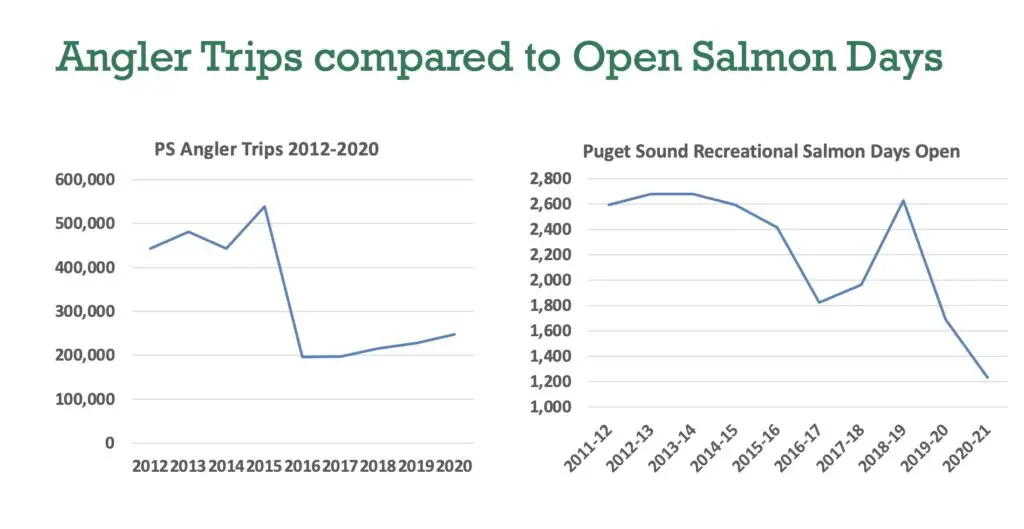
Since 2018-2019 we’ve lost nearly all of the opportunity to fish for blackmouth around Puget Sound.
As I mentioned in the opening paragraph, I joined the PSRFEF OC in 2022, which historically has been focussed on creating blackmouth fishing opportunities through funding the raising of hatchery yearling chinook.
Most of the budget the PSRFEF OC oversees goes towards raising hatchery chinook. Historically, this budget has focussed on raising yearling chinook to enhance the blackmouth opportunity.
Why are yearling chinook so important? When chinook are kept longer in the hatchery until they reach yearling status, they are more likely to stay in Puget Sound throughout their lifetime, making them an important part of blackmouth fishing opportunities.
Since the PSRFEF OC was established, the ratio of yearling chinook released by WDFW versus those caught by anglers has dramatically changed.
In fact, I did some calculations with the data I had available and determined that each legally retained blackmouth which was released as a yearling was costing us around 2500$ per fish.
The main factor here is the yearling chinook showing up in our catch has declined dramatically.
There are many factors as to why this might be, but as with all salmon outmigration concerns, many are credibly pointing the finger at pinniped predation.
Pinniped predation is a much larger conversation than what I have space to cover here.
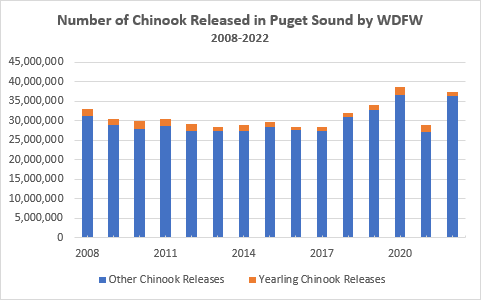
This decline in yearling chinook efficiency has resulted in fewer releases of yearling chinook.
Couple this with an increase in sub-yearling chinook released as part of the SRKW-related initiatives and you have the perfect storm of issues when combined with the introduction of sub-legal encounter quotas and test fishing.
Let me break it down:
With fewer legal-sized blackmouth to catch (less delayed release yearling chinook) and more sub-yearlings released and out-migrating between December and February, you end up with a scenario where anglers predominantly catch sub-legal chinook.
Some days on the water include ratios of 10-to-1 or even 20-to-1 encounter ratios of legal to sub-legal chinook.
Now, historically, WDFW has employed creel checkers to meet you at the dock to collect scientific, fisheries management-type data about what you caught and what you released.
Anglers have not only proven to be unreliable in reporting this data, but they’ve also openly boasted and posted about it on public social media where both WDFW and Tribal co-managers have access to it.
The result has been that creel data on salmon caught and released is not considered to be credible enough as “fisheries monitoring” to have a fishery on ESA-listed mixed stock of Puget Sound chinook. And if we are being honest about it, that absolutely makes sense.
Enter the test fishing boats and effort counts.
Now WDFW hires test fishing boats to fish alongside anglers and use the same gear anglers use and report the number of sub-legal, unclipped, and legal-to-retain salmon.
These ratios are updated throughout the season as more and more data is collected. Total angler effort and retained catch each day is counted as well and the resulting math determines how close we are to the quotas.
So when 50 boats go out on opening day on January 1st and catch 50 legal blackmouth, but the test fishing boats encounter 10 sub-legal chinook for each legal-sized fish, the math follows that 500 sub-legal chinook were encountered.
That might be a significant amount of the sub-legal quota.
The solution most of the recreational anglers have advocated for is seasons that open starting on March 1st, and have the possibility to go into April.
Most of the sub-legal chinook should have out-migrated by this point, ideally leaving a fishery that can go the distance.
Looking for more real time updates? Use these links to follow us on social media:
I appreciate your knowledge on winter blackmouth, which I think is the best of all fisheries in puget sound. I cut my teeth on this fish in the 70s as a teenager and over the decades have chased these fish about 50 times a year since. It was devastating to have the 2020,2021 season removed. Your gear choices and techniques are spot on, we learned all this in the field before all this information sharing was available as today. Happy fishing to you !
Thanks Gary for taking the time to provide feedback and comment! My apologies for being late in getting to the comment to approve. I get so many spam comments, I have everything in a queue now. If you would like to comment more, your comments will now be approved automatically.
I agree re the 2020/2021 season loss issue…Have you seen what the fish NW crew is doing with their lawsuit? I’m pretty encouraged that somebody is taking the fight to the state and federal level as we never should have lost this opportunity.
I’m also excited for the MA5 opener. I plan to be up there in Sekiu at some point in March. Will you be headed up there too?
Thanks,
Kyle
Great info! Are you on Twitter or somewhere i can follow you?
Yes! I’m on twitter @kylemtowle (PNWBestLife), also on Instagram @pacificnwbestlife, or facebook.com/PNWBestLife
What hatcheries are currently producing black mouth in Puget Sound?
Thanks for the great info. My wife and I fish together almost exclusively in area 13. That is mostly due to our home location south of Olympia. you are right about the paucity of fish in the area, but it is open season which is a plus. I think we might do better deeper, with braid, and bigger downrigger balls. We will give that a try along with some new flashers. Thanks again!
Nice! Yeah, you gotta be within 5 ft of the bottom usually for blackmouth!